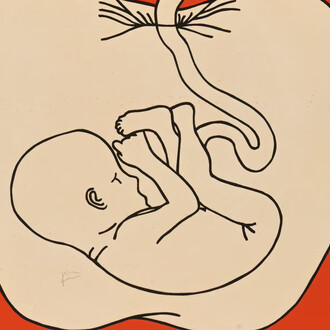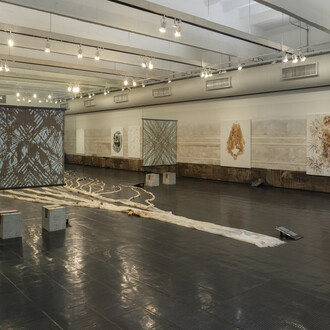This exhibition consolidates Teca Sandrini's preference for painting as an oblique language about reality, a knowledge that speaks through the silence of women, their longings and daydreams. In the various techniques and languages she experimented with, the diagonal structure was always present, which the Baroque saw as the best way to express movement and life.
Apart from the transition zones, Sandrini has at least three major phases. In Polacas, the fat, young lady, reclusive inside a square and surrounded on all sides by junk, signs of everyday domestic life, oscillates between the naive and the scathing. They are women immersed in their tasks, in their junk - pots, pans, drawers - in an organized madness. Neither heroines nor victims, just housewives bogged down in routine chores.
Later, in a flirtation with surrealism, animals intertwine with human beings, who gradually fade away and give way to the object until, finally, they give themselves up. In the saturation of objects, Teca feels the need to empty herself... This is the Fragments phase The woman hides and gives way to drawers and chairs - a place of secrets, safekeeping and waiting.
A flirtation with abstraction emerges. But not pure abstraction - the emotional side of the expressionist doesn't disappear. She exchanges the female form and the animals for the violence of colors and the concentration on the fragment.
The galloping difficulty of vision inaugurates Manchas phase, in which the artist allows herself to play with shapes. The concrete and the geometric merge with the emotions of life, dressed in stains, spontaneity and expressiveness, approaching all over. Strong colors give way to large stains and, in the lights that go out, white sprouts as light. A new, non-narrative painting emerges.
Today's Teca is outlined in stains. Apart from the journey through the Marias, which seem to be a concert with all the women of the past, her paintings are reminiscences of life. You have to lose the earthly paradise to truly experience it, said Bachelard. The loss of part of the sight sharpens the gaze and intensifies the desire to see the world. Her painting continues to be the exercise of a profane religion, because it is immersed in the world; ontological, because it is immersed in the immensity of the language of art; intimate - and therefore true. Metaphor of resistance, poetics of the gaze, praise of the hand.
(Text by Maria José Justino. Curator)
















